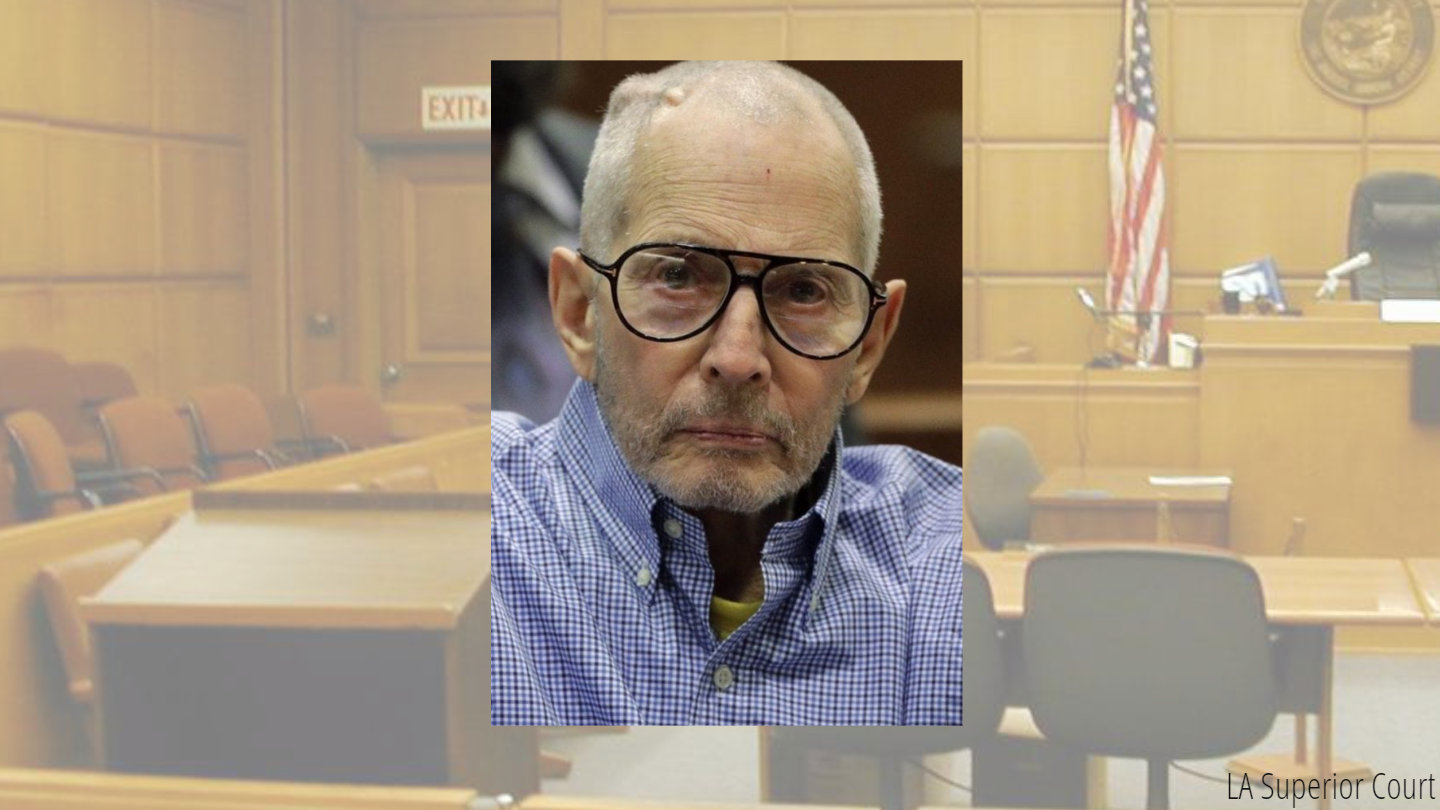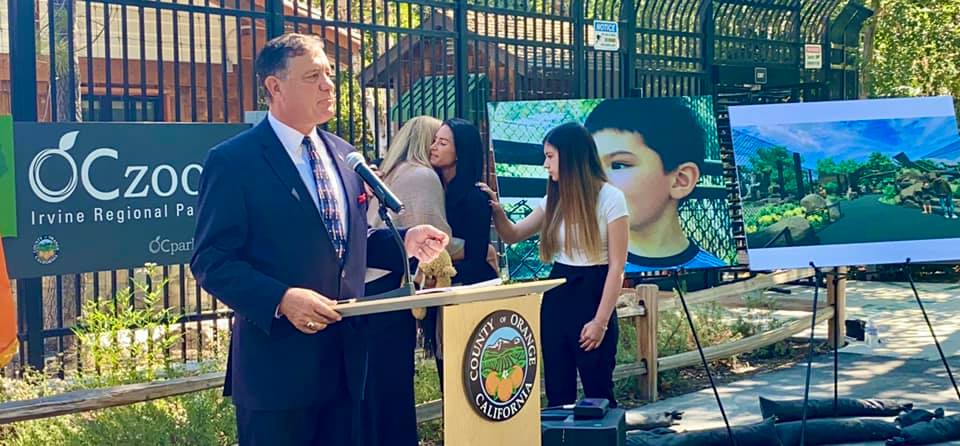Trial resumed Monday for New York real estate scion and accused murderer Robert Durst following his hospitalization last week, despite his defense team’s push for an adjournment.
A doctor appointed by the defense said the 78-year-old defendant, who was hospitalized Thursday, was diagnosed with a urinary tract infection and sepsis as a complication of his bladder cancer and malnutrition, according to lead defense lawyer Dick DeGuerin.
Outside the presence of the jury, Durst appeared in court wearing jail clothes and with a catheter bag hanging from his wheelchair.
Los Angeles Superior Court Judge Mark Windham said he was told the defendant was unable to stand to get dressed in street clothes and suggested a blanket be placed over his shoulders to make him more presentable to the jury.
Deputy District Attorney John Lewin argued that Durst’s appearance only helped his defense.
“Mr. Durst looks like a very sympathetic character right now,” Lewin said. “He’s sitting in a wheelchair, he looks very old and feeble, he’s got a catheter hanging out. This doesn’t look like someone who’s murdered three people.”
Less than a month ago, Windham rejected an emergency motion from the defense seeking to postpone the trial indefinitely based on what lawyers said were the defendant’s “life-threatening” health issues.
In making the case for a continuance, DeGuerin reeled off a list of Durst’s serious health concerns, including severe malnourishment, a recurrence of esophageal cancer, atrial fibrillation, chronic kidney disease, coronary disease, chronic obstructive pulmonary disease and spinal disease. He said his client has gotten “much worse” in the last year.
On Monday, the defense said the defendant was also having trouble tracking time and place, making it difficult for him to participate in his defense.
Despite appearances, Lewin told the court, “Mr. Durst is on tape talking about faking dementia, he’s on tape talking about using COVID to get a new jury so he can start over … he doesn’t want to be here, he doesn’t want this trial to continue.”
Durst is charged with murder for the December 2000 killing of Susan Berman, a writer with whom he had been close friends for years after the two met at UCLA. The murder charge includes the special circumstance allegation that she was killed because she was a witness to a crime.
The prosecutor told jurors last month that the evidence would show that Durst shot and killed the 55-year-old Berman “out of survival” because he feared she would tell authorities about his involvement in the disappearance of his first wife, Kathie.
Once the jury was seated Monday morning, Berman’s longtime friend, Susan Harmon, testified that Berman had told her that Durst and his wife Kathie had had a fight and “something terrible had happened.”
Harmon said she was absolutely certain in her memory.
“She said that her friend Bobby had had a fight with his wife. She didn’t know what she was going to do,” Harmon said. “They’d had a fight, there was an accident on the stairs, and that she had to do something.”
At the time, Harmon said, she thought Berman meant she had to help the couple, rather than Robert Durst alone, but Berman never elaborated on what she planned to do.
“She intended to do something to help him,” Harmon clarified during cross-examination.
Defense attorney David Chesnoff challenged Harmon’s memory, citing conversations with police in which she asked if she could be hypnotized to better recall the facts.
The lawyer also quoted Harmon telling investigators, “I’ve been influenced by what I’ve read.”
During an updated opening statement last month, Lewin called the cases of Kathie Durst and Susan Berman “interrelated,” and told jurors they would hear evidence that Durst killed his wife and used Berman to help cover up his part in the crime, and that he subsequently had to kill another person, Morris Black, in Galveston, Texas, in 2001, because the man figured out who Durst was and was putting pressure on him.
The prosecutors painted a picture of the killing for the jurors.
“Susan Berman never saw what happened. She never knew it was going to happen. She turned around because she trusted him because he was her close friend. He was not someone to fear … She took a few steps and he basically blew her brains out,” Lewin said.
DeGuerin countered that his client had no motive to kill his longtime friend in her home in the Benedict Canyon area of Los Angeles and had nothing to gain from her shooting death.
“Bob Durst did not kill Susan Berman and he does not know who did,” DeGuerin told the panel twice, reiterating his opening statement to jurors in March 2020 shortly before the trial was stalled for more than a year by the COVID-19 pandemic.
“The evidence is lacking. The evidence isn’t there,” DeGuerin said.
Durst — who contended that Black was killed during a struggle over a gun before Durst dismembered his neighbor — was acquitted in Texas of that killing.
Durst’s attorney countered that the disappearance of Kathie Durst and Berman’s killing were “completely dissimilar” to Black’s shooting death.
“Whoever killed Susan Berman left no clues. Kathie Durst disappeared without a trace. After Morris Black’s death, the police found hundreds of clues,” the defense attorney told the jury.
He said Durst went to Berman’s home in December 2000, found his close friend dead and “freaked out,” then sent a note to Beverly Hills police about her body.
DeGuerin also told jurors that his client — whom he said suffered from what has been known as Asperger’s syndrome — has “been considered a little bit weird” and run away all of his life and “doesn’t make what we would consider good decisions,” reminding jurors that they will hear from the defendant during the trial.
He said Durst “had no motive and nothing to gain” by Berman’s death, noting later that there was no forensic evidence linking his client to that killing. He also disputed the prosecution’s contention that Berman made a phone call posing as Kathie Durst and called Berman a “storyteller” who had a “great imagination” and “made things up.”
DeGuerin told the panel that a six-part HBO series “The Jinx: The Life and Deaths of Robert Durst,” in which the defendant was recorded saying “There it is, you’re caught” and “killed them all, of course,” was “heavily edited” and “not a documentary.”
The defense attorney said Durst “wanted his story out,” but chose the wrong people to tell that story and realized by the time the fifth episode aired that it was a “hatchet job.”
He has been behind bars since March 14, 2015, when he was taken into custody in a New Orleans hotel room hours before the airing of the final episode of the HBO series, which examined Kathie’s disappearance and the killings of Berman and Black.
Durst has been long estranged from his real estate-rich family, which is known for ownership of a series of New York City skyscrapers — including an investment in the World Trade Center. He split with the family when his younger brother was placed in charge of the family business, leading to a drawn-out legal battle, and ultimately reached a settlement under which the family reportedly paid him $60 million to $65 million.







